Darksiders III
- Information
- Trailer

A well-intentioned sequel
With Darksiders III I was recently able to cross a game off my bucket list that I was really looking forward to when it was announced, only to be de-hyped relatively quickly. A combat system more like Dark Souls, no open world like part 2 and a moderately likeable protagonist were all indicators of why I would have less fun with this game. I'll now tell you why Darksiders III was still able to give me a few enjoyable hours and what the lack of beloved features had to do with it.
Darksiders IIIDarksiders III, which was released in November 2018 (God, it's been a long time...), is the third installment in the now 4-part fantasy series. The principle of the series is relatively simple: in each of the brawler games, we embody one of the four horsemen of the apocalypse. War in part 1, Death in part 2, now Fury in this part and Strive in the latest Darksiders Genesis. But the four apocalyptic horsemen are not the end of the Bible myth quoting. Because the threshing orgy that God of War is for Greek and, more recently, Norse mythology, adapts the Darksiders-universe for the Christian side. Angels fight against demons, heaven against hell, good against evil, and the victims of the proverbial apocalypse are the humans whose homeland is used as a battlefield.
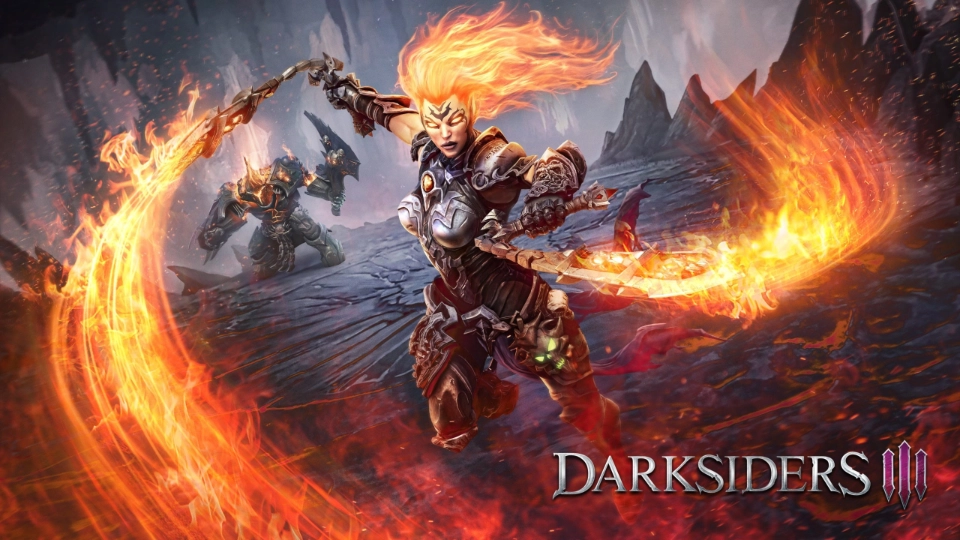
Shredding shredding
That's why we, in the form of Fury, arrive on Earth right at the beginning, in the middle of a destroyed and overgrown cityscape where the horned demon spawn and undead ex-inhabitants have made themselves at home. Why are we here? Who sent us? I could try to explain that, but to be honest, the two predecessors were so far in the past that my memory was only able to dig up fragments of relevant information. And even at the end of the game, I had just as many question marks on my face as I did at the beginning. Even a 35-minute YouTube video summarizing the lore of the Darksiders-series with its games and comics didn't help. Basically, all I knew was that I was supposed to hunt down the seven deadly sins that had taken up residence on Earth. Fortunately, the world in Darksiders III appears to consist of a single city with different areas, otherwise the task would have been much more difficult. Once we reach the bottom, we are soon attacked by the first smaller enemies, which can be dismantled with a few blows from Fury's energy whip. The reward are souls and shards, which we can use in battle to heal or otherwise buff ourselves.
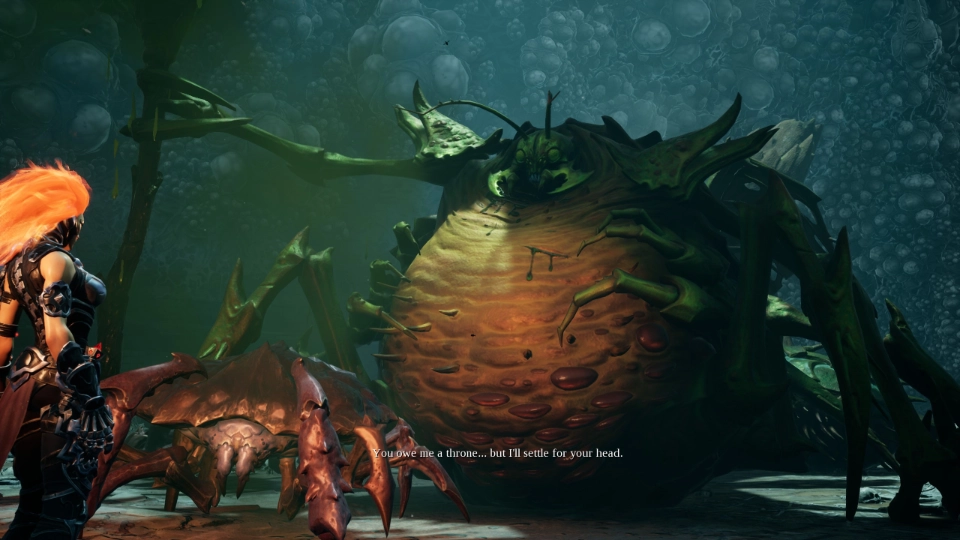
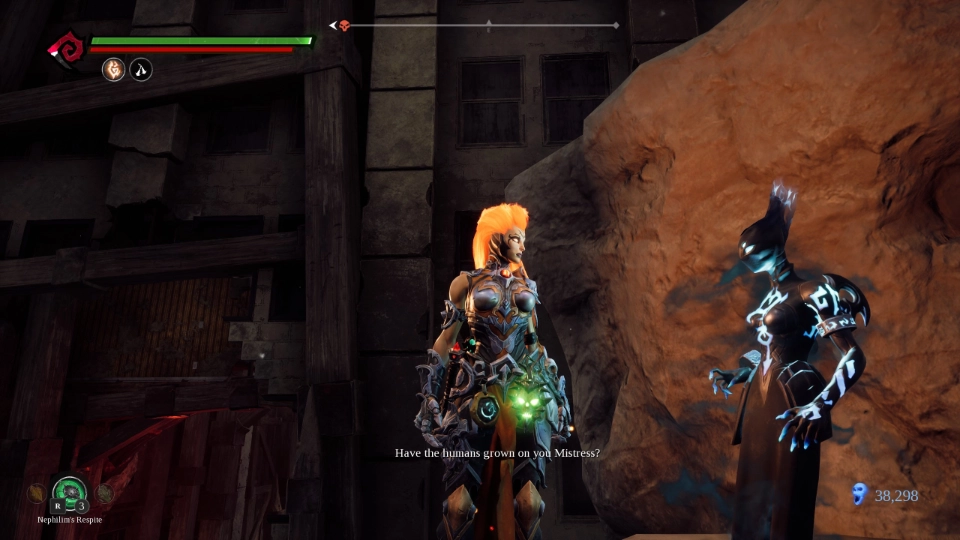

Shortly afterwards, the first boss fight confirms my expectations. The standard combat system of Darksiders III, which you can select at the start of the game, is clearly reminiscent of the Souls-series. Lock-on and dodge rolls are mandatory, and while the enemy's life bar empties slowly despite the medium difficulty level, we can only take a few hits. All the better that good timing is rewarded. A perfect dodge move allows us to counter the opponent and deal a lot of unblockable damage - a satisfying feeling that can quickly become routine with enough practice and a lack of stamina management. It is also pleasing that there are a variety of enemy types with different attack patterns that we encounter on our way through the adventure. Nasty spider creatures, skeleton warriors or winged angels: there's no such thing as good and evil for us, we'll beat up anything that gets in our way.
Before I get to the level design, however, I have some criticism of the boss fights, the actual centerpiece of a Soulslike and, with the defeat of the seven deadly sins being the clear objective, also an integral part of Darksiders III. While the character design and especially the sins are beautifully designed and portrayed according to their respective vices, the actual fights are disappointingly monotonous. Although a few of the bosses have different phases, overall you'll be familiar with the attack patterns after the second attempt at the latest and it's just a matter of how patient and accurate you are in the duels. That's a shame, because if the plot is confusing in itself, it's those fights that should be memorable. This way, on the other hand, you have that “Why did I bother?” feeling when the credits scroll across the screen at the end.
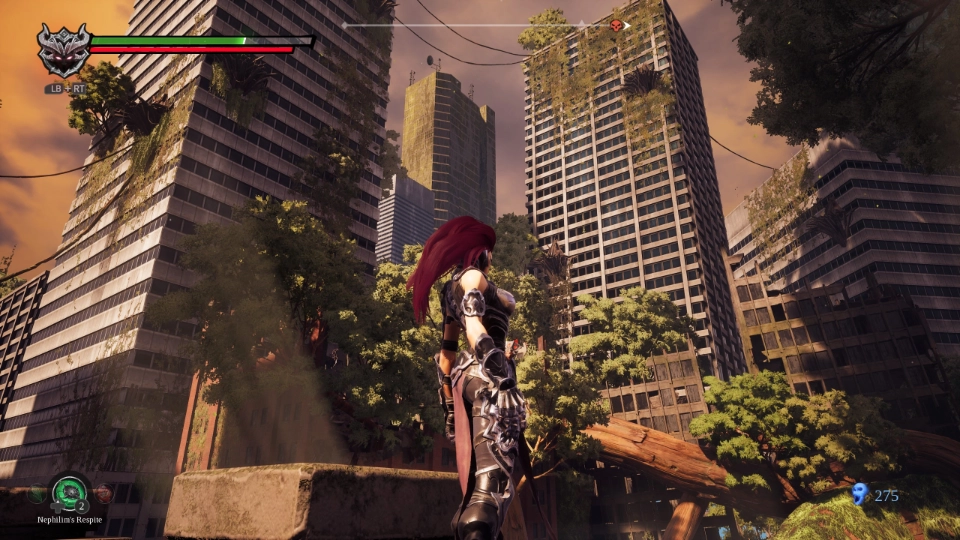
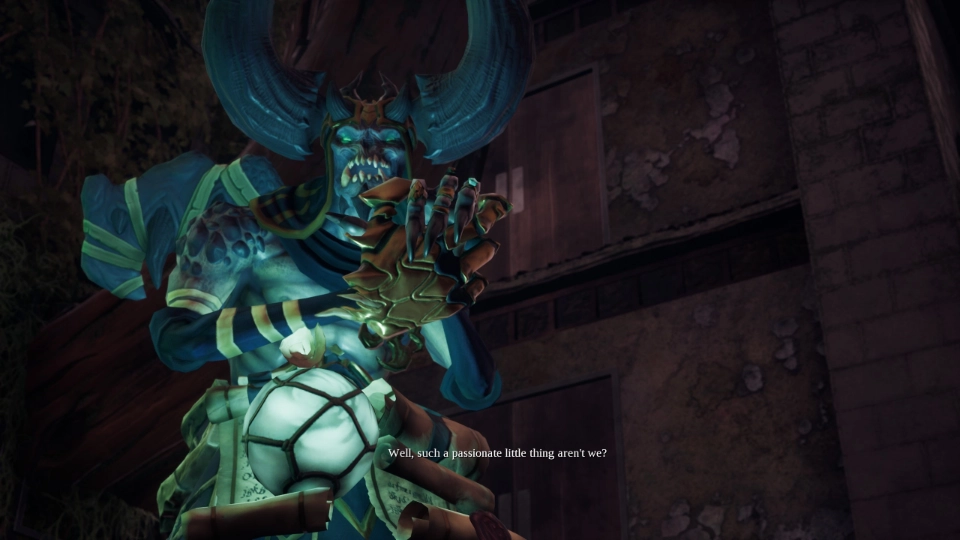
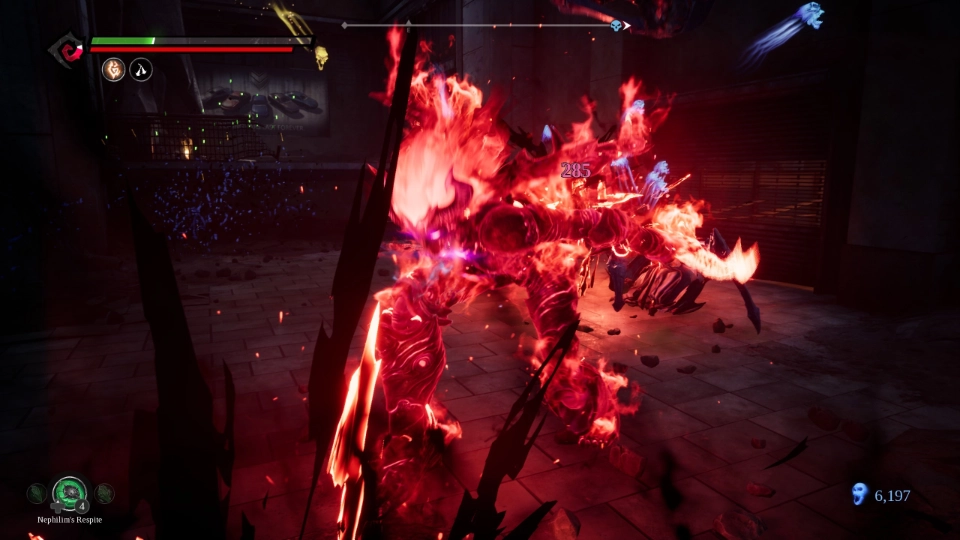
Blessed are the poor in life
But if you're looking for reasons to like the game after all, you'll find them in Darksiders III. because the art style and the self-contained game world are one of the title's greatest strengths. Now I was a big fan of the second game, which as far as I know was less well received by many people in the community than the first Darksiders, be it because of the open world, the inventory or the crafting system. That's why these fans will probably be pleased that part 3 is going more in the direction of the original - at least in terms of levels. Here's a little metaphor: If we imagine Darksiders 1 as the straight trunk of a tree with a few branches and Darksiders 2 as the open treetop, then Darksiders III is the winding root system that runs through the earth.
In true Metroidvania style, the individual areas that we roam through on our search for the biblical plagues are connected by shortcuts. We can unlock these with our newly learned abilities when we revisit them, as Fury is given different forms during her adventure along with new attacks that correspond to the four elements: In her lightning form, she can glide after a jump and thus be lifted to higher plateaus by gusts of wind, while as a human flame she can boot through lava and ignite spider webs. Stasis, on the other hand, allows us to walk on water (visually very cool) and the earth ability lets us roll along crystal walls. In general, the level design is very well done and exploring is thankfully fun enough, even if comfort features such as a map or an overview of hidden collectables in the various regions would have been nice.
In addition to souls and shards, which we can exchange for experience points and upgrades at the familiar demon merchant Vulgrim, we also find a handful of the surviving humans, who we send to the safe 'Haven'. There, Maker Ulthane Blackhammer uses angel and demon artifacts to improve our weapons, such as our trusty whip or the ranged glaive. These then do even more damage or strengthen us in battles with passive bonuses such as more rage generation or increased magical damage. In addition, the different abilities are helpful in battle and add more spice to the otherwise rather dull whipping.
Visually, it all looks fantastic, and the free and fluid switching between the different forms is always a pleasure, bringing back memories of Dragonball . Meanwhile, upgrading attributes and weapons is a must. Thankfully, the enemies do not level up, but in return this means that at the beginning we often bite into the overgrown asphalt and - thanks to Dark Souls - have to run past the respawned enemies to collect our lost souls. In return, we can later dismember many enemies with one or two blows. Fortunately, there was no annoying grind, perhaps also because I whipped everything to bits, as everything in the world of Darksiders seems to contain souls. Park benches, street signs, vases; the blue currency can be beaten out of everything. You don't want to think about reincarnation here.
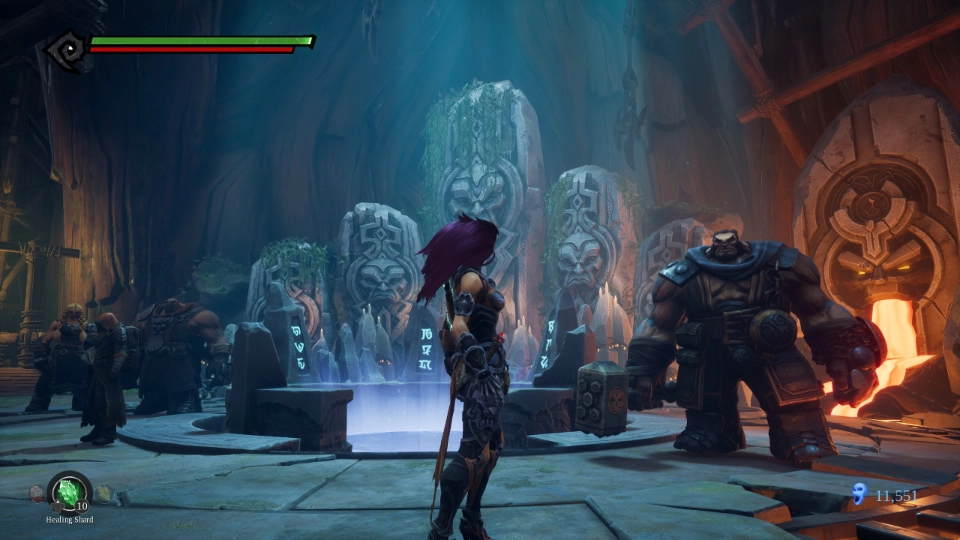
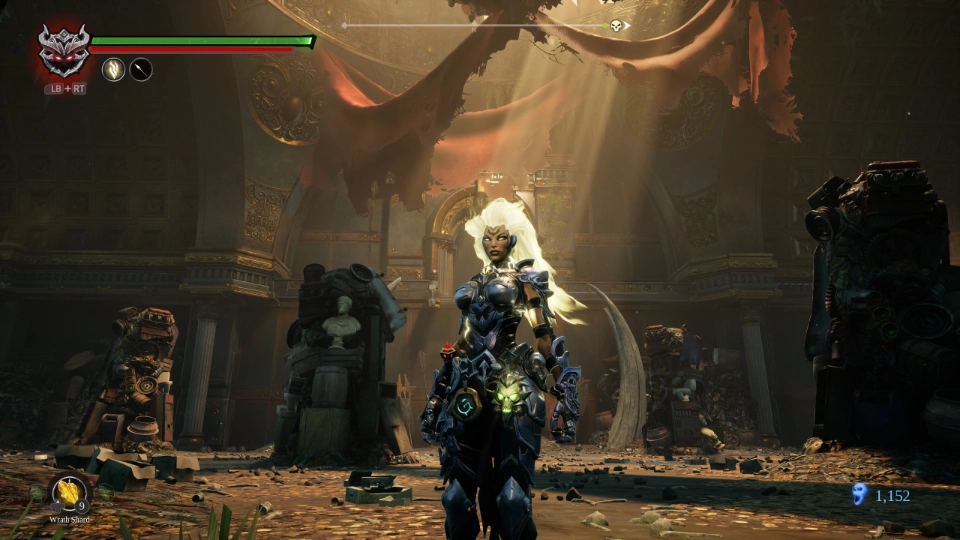
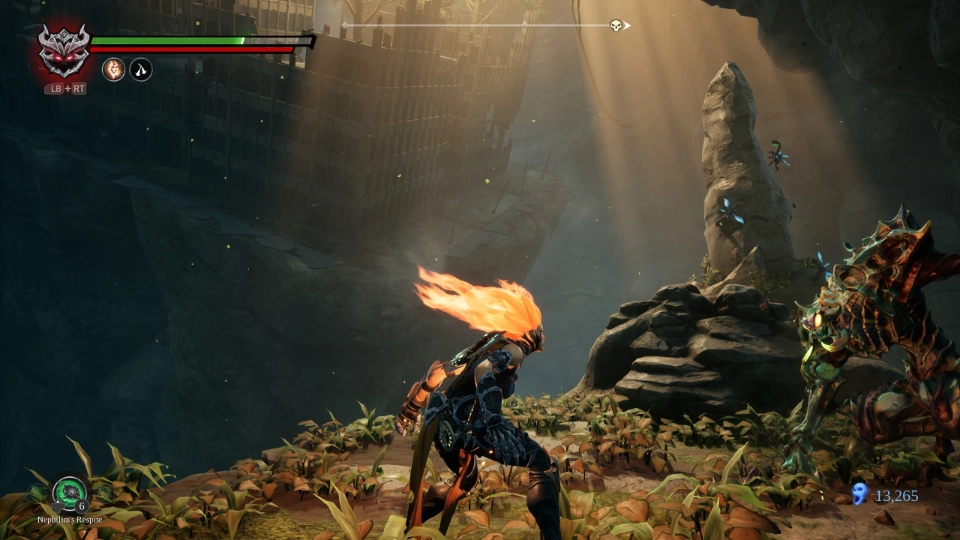
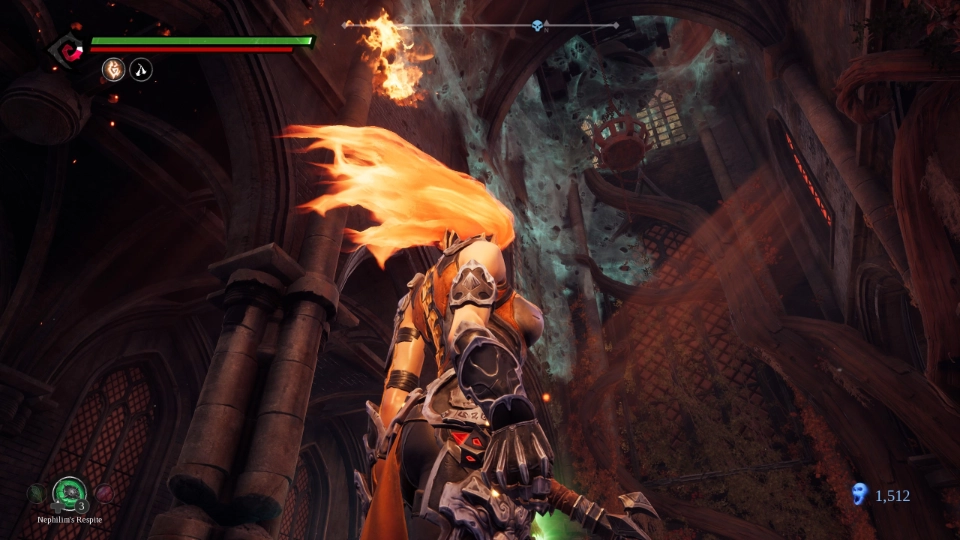
The unloved teenager
Now we come to the whip-wielder herself and one of the bigger criticisms that the fan community, and to some extent I, have. Fury, as her name suggests, is a hot-tempered, dominant figure who in many ways is more reminiscent of a rebellious teenager than an aspect of the apocalypse - although here too, concerned parents and teachers would probably assure me that there is a resemblance. Be that as it may. Fury simply sucks for long stretches of the game. Where the equally angry but often understanding War from Part 1 and the even sympathetic Death from Darksiders 2 still have redeeming qualities, Fury is often just tiring.
This becomes particularly clear in the conversations with the Watcher, who has been assigned to her as a mental guardian by our client. He is used narratively by the game to provide the player with some source of information and to serve as a conversation partner for Fury, but 90 percent of the time he is a verbal punching bag for our supernatural dominatrix to vent her anger. This can be annoying, and sometimes it is, but at the same time I'm grateful to the developers that we're not playing the standard Good Guy (or Gurl), or an unwilling Good Guy. Although Fury also undergoes a development, especially towards the end, for large parts of the game she remains the anger incarnate that she is supposed to embody - and that suits Darksiders. My only criticism of the Fury character is actually the English dubbing voice of Cissy Jones, who mostly does a good job, just not when literal fury takes over. The screams of rage, the roars, even though they are probably the most demanding job for a voice actress, don't feel powerful enough or angry enough for me. A 7/10, maybe even an 8, but going utterly bonkers sounds different to me.
The fact that, despite the manageable number of dubbed characters, some voice actors take on several recognizable roles also bothered me in one particular case and I actually had to ask myself whether this was intended - spoiler: no. Since we seem to have reached the criticism section, here is a list of minor and major flaws that bothered me while playing.
As already mentioned, the world looks fantastic. The regions are distinctly different from one another and the checkpoints and fast travel points are fairly placed. However, when viewed up close, the textures are often muddy or load too late and the facial animations outside the cutscenes in particular are terribly wooden.
Speaking of cutscenes: while the actors' facial expressions are pleasantly well done here, the frame rate drops spoil the enjoyment of the story. This is particularly annoying, as the game used to run at 60 FPS throughout. Of course, this may be due to my hardware (which has been acting up lately anyway), but since the game ran smoothly in windowed mode, I was surprised. The battles also look nice and are easy to handle, but they often lose legibility due to the visually impressive flurry of effects, especially when using the abilities. As a result, I was repeatedly hit by an enemy because I couldn't see if and how he was going to attack me. On the puzzle front, however, there is nothing to complain about. Although they are much more rare than in the previous game and hardly really challenging, they are reasonable and at least briefly interrupt the monotonous fighting. That's it, let's move on to the conclusion.
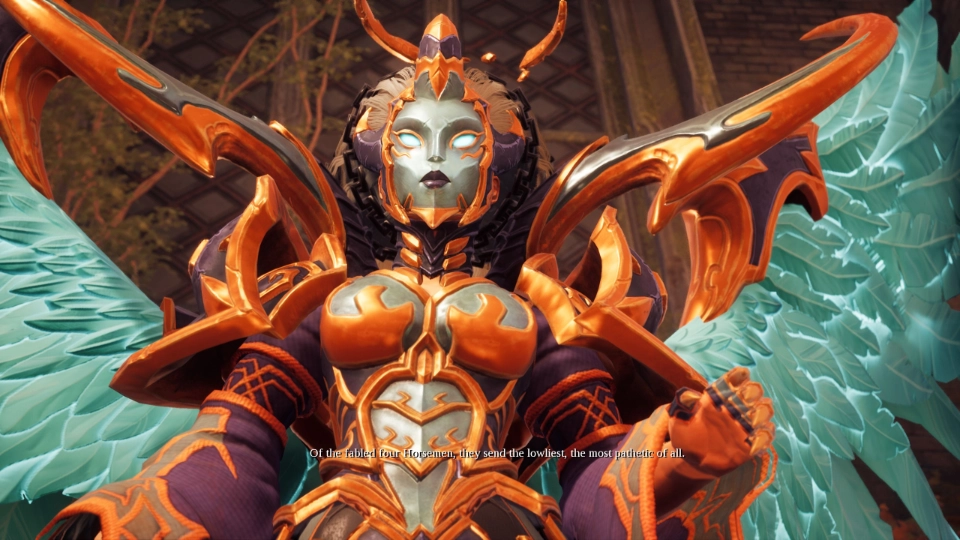
Summary
Darksiders III is unfortunately not the sequel to Game 2 that was hoped for. That was to be expected, that was to be predicted. What I didn't think was that I would enjoy the challenging, duel-oriented combat system so much. The reduced but free level system, the playfully uniform but visually appealing abilities and even the streamlined and therefore more comprehensible story made me look past many points of criticism. Because the focus on the essentials, exploration and combat, made the loss of many cherished features such as the item system, combo and climbing mechanics and the open world more bearable.
Darksiders III doesn't want to be an ugly hybrid of half Dark Souls, half Darksiders but is a complete Souls-like in the Darksiders-universe. It's not quite as punishing as the spiritual original and is more forgiving, so I had more fun with it overall and even enjoyed exploring a bit more without wanting to watch an annoying collectable counter fill up. It was a pleasant snack for in between, even if I would have liked a fully-fledged Darksiders III in the style of the second installment. And unfortunately it's not enough for a New Game Plus walkthrough. After all, only fighting doesn't really bring happiness.


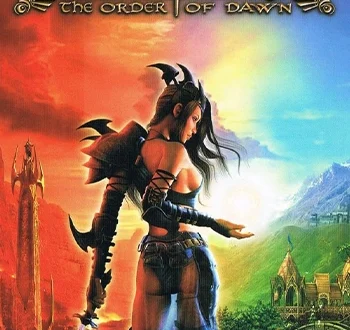

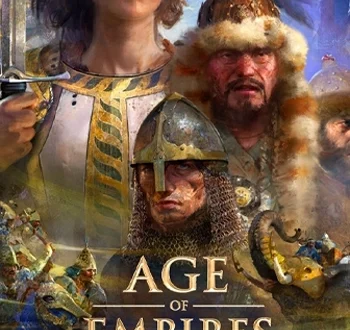
One Comment
Muhstafa
Eine Freude, so ein ausführliches Review zu einem eher unrühmlichen Serienteil zu lesen.
Ich muhss aber auch Kritik an der Kritik üben. Biblische Plagen als Bezeichnung für die Todsünden ist eher unpassend. (Die 7 Todsünden sind ein Katalog, der von Institutionen aufgestellt wurde, aber nicht von der Bibel selbst).
Dennoch muhss ich sagen, ich hatte meine helle Freude am Lesen und gehe mit vielen Punkten überein auch wenn ich die Quantität an kreative Wortspielereien anderer Reviews teils vermisse. Hier kommen sie qualitativ durch, sind aber nicht so häufig. Liegt wahrscheinlich daran, das Fury auch nicht die Kreativste ist.
Muh zum Gruße